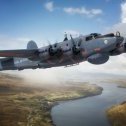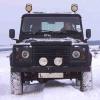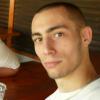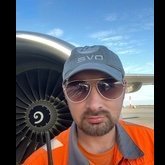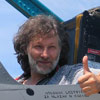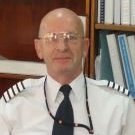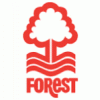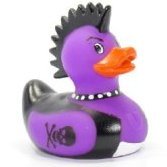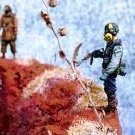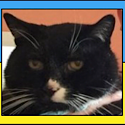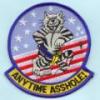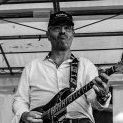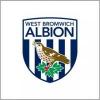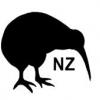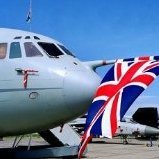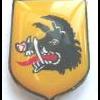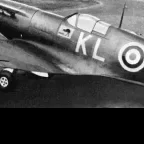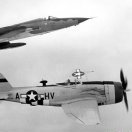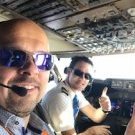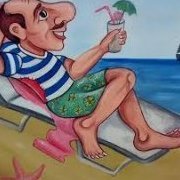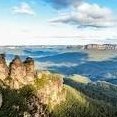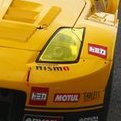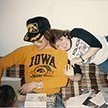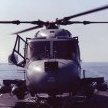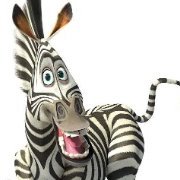Leaderboard
Popular Content
Showing content with the highest reputation on 18/07/22 in all areas
-
Matchbox's Twin Otter with the aerocraftmodels.com resin cockpit section, engine front and propellers and their brass undercarriage. I wish I had bought their wheels as well. The engine fronts and propellers are very subtly different, you could modify the Matchbox propellers fairly easily to be feathered, but the cockpit section gives the correct windscreen profile which makes a massive difference and the brass undercarriage is brilliant for a model that is quite heavy due to all the nose-weight added. I believe the skis are hydraulically retractable on the original, but Matchbox moulded them with a solid piece under the wheels. I opted to open this out and raise the skis, which made the mounting on the undercarriage very difficult and insecure: not recommended. The kit was missing the transparent sprues when it was bought (seller was honest) so the side windows are Micro Krystal Klear. Xtracrylix Red Arrows Red and Mr Color gloss black make up the main colours, with Mr Color GX112 gloss varnish to finish. Decals are Caracal and were flawless; I just wish they had the 'Ice Cold Katy' script for the cockpit doors. The aircraft are very clean in all the on-line photos I could find, but exhaust staining streaks are really heavy on the original; although very prominent on the model they really aren't overdone.29 points
-
Hi All Just finished building Airfix's 1/48 F-86F-40 in the JASDF scheme. In all my years of modelling this was my first natural metal scheme so it could have possibly turned out a bit better but I am happy with it. With the last photo I tried to get a shot of the detail in the cockpit, as the Eduard Zoom set really dresses it up well but, as usual distortion from the canopy prevents a good shot. I could have displayed it with the canopy open but I preferred the look of it closed Regards Mick23 points
-
Dear fellow Britmodellers, here's my 1/72 Airfix Hawker Tempest Mk.V in markings of Wing Commander Roland Beamont, No. 150 Wing, based at Newchurch, Kent in June 1944. Painted with Mr.Hobby acrylics. Photos by Wolfgang Rabel. The model was built from the box. I added seatbelts from tape and whip antenna from stretched sprue. Airfix' decals are of excellent quality and settled perfectly onto the surface structure. I opted to paint the D-Day stripes instead of using the decals provided. Thanks for your interest, best greetings from Vienna! Roman21 points
-
Here is one I finished up recently it's the old FM Mirage V 1:48 kit finished in the colours of the air force of the now defunct state of Zaire ( DR Congo). Despite FM reputation this went together reasonably well and without too much fuss. I rescribed all the old Heller wing parts but the FM fuselage just needed a little cleaning up. Lots of resin and white metal to give this some weight. They don't make kits like this any more. As for the subject and colour scheme I used the old Carpena (under the monicker Colorado Decals ) set 48.01 Chad 1983-1986 which features French warplanes fighting in Chad with some help form Zaire. I had always wanted to do this a/c just for the fablous colours and am rather happy with the result. The wing tanks need to be fitted. Another one for my Africa collection Regards Brian20 points
-
M3A1 White Scout Car of the Gendarmerie Katangaise fighting UN forces in Elisabethville, Katanga ( Congo) December 1961. Kit: Hobby Boss 1;35 scale . Figures adopted form a variety of sources. Stills taken form Pathe films Regards Brian18 points
-
Heyy! I show you my completed Chinook. This models ona of the four examples converted into an ACH-47 variants. All of them were tested in Vietnam, untill three of them were lost and the only remaining were withdrewn from duty. You can see the boulding here: I used the Eduard etchted fret dedicated to this kit. To be honest, the only worthy part of this detail set is the bunch of ammo boxes, however these dont seems to be correct either. Also I got a CMK cockpit that I used and it stopped the build for long-long times, as it does not fits to the fusalage halves and does not fit to the windshield. Looking the kit itself, its a bit out of date and the holes in the cargo bay's ceilig is a huge negligence. All in all, If anyone wants to bould an ACH-47 I recommend to have the Trumpeter CH-47A kit and use the specific parts from this kit.17 points
-
Hi All, My latest completion is Special Hobby's Short Sunderland Mk.III, modelled as EJ134 'N-Nuts' of 461 Sqn RAAF, based at RAF Pembroke Dock, Wales, 1943, and captained by Flt Lt C B Walker. The Sunderland was known as The Flying Porcupine for its extensive defensive armament and ability to fight off enemy aircraft. 'N-Nuts' very much lived up to this name on 2nd June 1943, whilst on patrol over the Bay of Biscay she was attacked by no less than 8 Ju88s of KG40. During this protracted engagement the crew of EJ134 destroyed 3 of the Ju88s, severely damaging another 2. EJ134 also sustained significant damage as well as several of the crew being severely injured, and Sgt E C B Miles sadly succumbing to his mortal wounds. However, the crew nursed the damaged aircraft back to the Cornish coast without incident and eventually beached the aircraft on Praa Sands. There is an extensive account of the battle on the 'Aircrew Remembered' website - it is compelling reading: http://aircrewremembered.com/walker-colin.html I have found two photos of EJ134 - both of these photos are copyright Poole Flying Boat Celebration, and will be removed on request. Here's their website, which again is well worth a look: http://www.pooleflyingboats.com/archive/04 Changes-at-Poole-with-RAF-Hamworthy.pdf 461 Sqn were stationed at RAF Harmworthy near Poole before relocating to Pembroke Dock, and the website contains a wealth of evocative period detail. The first photo shows the ground crew in front of EJ134: The second shows 'N-Nuts' after ditching at Praa Sands: You can see the distinctive wavy camouflage demarcation on the rear fuselage in this photo. Here's a couple more very evocative shots showing Sunderlands at Pembroke Dock: I suspect these are newly-delivered aircraft, as there are no squadron codes applied. Right - to the build! Here's a link to the WIP if anybody is interested: Here's a couple of shots in progress to show the lovely interior detail: Finally, here's the finished article, which was mostly OOB save a set of Montex masks: Finally, I couldn't resist a couple of shots with another large Short Brothers aircraft - the Stirling Mk.I of PO Rawdon 'Ron' H Middleton VC RAAF, which has its own extraordinary story of Aussie bravery: A pretty imposing pair of aircraft, even in gentleman's scale! I've very much enjoyed the challenge of this build - the kit has the usual Special Hobby foibles but I believe it builds up into a pretty accurate Mk.III. I must thank @LDSModeller who was a valuable source of advice on Sunderland detail throughout the build, and @AliGauld whose parallel Mk.V build provided much inspiration along the way. Thanks also to all those who added words of encouragement throughout the build - as ever it is sincerely appreciated, Thanks for looking, Roger15 points
-
Hello, it's me again 😃 So, finally I've finished with my last model of Airbus A-320 series, and with "parade" of 320's models as well. The main stages of the work you can find in WIP. And I want to tell a few words about the kit first. It was purchased about 1,5 years ago, that time there was no 320NEO in Zvezda catalogue, and this kit was named usual "Airbus A-321" (now it's named A-321 CEO and there is nice TAP-Portugal decal-sheet included). But that time it was provided with standard Airbus home livery out-of-box. So that time I had an idea to built the kit in Metrojet EI-ETJ livery in memory of that poor souls who were killed over Sinai in terrorist attack in 2015. But later I've refused from that idea, and kit was stored for all that time in reserve. Also I've "stolen" some parts to replace that I've lost during another 320's building. And now it's time has come! I've chosen Aeroflot livery as some challenge for myself: I've never done such difficult borders of colours on my models. Also, I work with Aeroflot every working day, I was their passenger for many times, but still I have no Aeroflot model on the shelve? Shame on me! 😁 So I think there is no need to tell about Zvezda kit - it's really high qulity product, as any other Zvezda civil liners. I've used only a few putty, to remove the slot between wings and fuselage. I think there is no need to tell here about painting progress in details. All that I've described in WIP topic. Only I will tell that most colours were Master-Acrylic and Mr.Hobby. The main gray-metallic was mixed from white and black MR. Hobby plus some MAKR aluminium. IMHO the result is not so far from prototype. BTW the prototype of the plane served in Aeroflot till 2018. Then it was transferred to Canadian Air Transat airlines. There it got a new livery and sucessfully flies till today. During the period it was in Aeroflot, it had VQ-BEI reg. number and personal name S. Korolev. And here I've to tell a few words about decals. I've purchased PAS-decals sheet. There were 6 variants of bording numbers but no one stencil for personal aiprlane's name. Really strange and upset fact. So I've used another one name-stencil from reserve out-of box sheet for A-320. So mu model now named Sofya Kovalevskaya. Let it be this way, BTW there are only 3 or 4 of Aeroflot planes that named in tribute of famous women, and Kovalevskaya is one of them. In conclusion I want to tell that it was another one interesting built. Though I see a lot of small disadvantages in the finished model, but anyway I like it and satisfied with the result. I'm really interested in your opinion about Aeroflot gray colour, whether it looks realistic or no. So criticism and comments are warmly welcome, as usual. Respects, tMikha. PS and one photo of my 320's finished collection on the shelve in concluding.15 points
-
12 points
-
This is my recently completed model of the Ecosse C285 which appeared at the Le Mans test weekend in 1986. It is the Automany resin kit. The castings were a bit rough in some places, and perilously thin in others. I had to rebuild the upper parts of the doors and cut replacement windows from 10thou clear sheet. The air intakes above the cockpit were not cast into the body, so I made some from plastic card, and inserted them into the roof. The original plan was to build it as the number 79, Rover 4V V6 powered, C286 sister car that raced at Le Mans. Unfortunately, the decals for the stripes were quite thick and did not want to conform to the shape of the body. Application of Micro Set resulted in the decals curling up into balls, so the model was consigned to the shelf of doom for a short while. I later came across images of the Ford powered number 78 car at the test weekend. The kit decal sheet had the correct red numbers, so that's what I ended up with. Not as colourful, but at least I was able to finish the model. Another Le Mans contender added to the collection. Thanks for looking. Trevor12 points
-
It's been a while! I had a week off work so I've decided to spend the time the best possible way, that means doing some modelling! This is a very nice little kit by Trumpeter on my preferred scale (1:72) perhaps the only low was the decals but nothing too bad really. I hope you guys like it and all comments are welcomed! Ukrainian Air Force, Gostomoel airport, MIG-29C (Izdeliye 9.13) "White 44" Thanks for looking! Jorge11 points
-
Hi, here’s another recent finish. Tried scratch building the small intake on the port side behind the cockpit as it’s not in the kit, not brilliant or completely correct shape wise but it’ll do for me! Used a Master metal pitot plus some seatbelts from spares, otherwise SFTB.11 points
-
Finished in April but only just photographed; Special Hobby's 1/72 FMA IA 58 Pucara. The kit has resin and etch parts which the Airfix rebox does not. All fits well with the exception of the canopy which is a little narrow for the fuselage openings. The kit lacks the central pylon which is almost always fitted, and the wing pylons have no landing lights which are very prominent so the model benefits from adding these. As far as possible I have tried to follow the pattern of camouflage on the original which is currently in the North East Aviation Museum. It is airbrushed free-hand with Vallejo Iraqi Sand and Tamiya Sky uppers, and the underside is Vallejo Sky Blue which should be much scruffier; hey ho. The decals are from the very comprehensive Aztec Decals South Warriors sheet.11 points
-
Hello! This is my final build until August 10 because I'm going on holiday! Despite the nastiness of this kit I managed to finish it in twelve days and I'm quite happy with it. Without further delay here she is. And here she is next to my 1:72 Junglie ZA314, they look very good next to each other even if one is RAF and the other RN. I hope you enjoyed looking at these photos! WIP thread:10 points
-
I hadn’t planned on joining this GB, but a cheap kit came my way. I’m using the Swiss Air Force boxing of the Italeri 1/72 kit along with some FCM decals to build a model serving with the Força Aérea Brasileira. I’ve also got the Eduard cockpit PE set (because it was dirt cheap), though I’m not sure if I’ll actually use much of it. So, this is what I’ve got: This is the scheme I’ve chosen, a four-colour blue & grey camouflage: Sprues to prove it’s unstarted: And finally, some AK Real Colour paints in the appropriate shades. This will be my first time using Real Colour paints: Expect a start at some point either after I’ve cleared the decks of the current projects, or when I get impatient. James9 points
-
Hi all, This is my 1/35 tamiya Tiger 1, depicted as 201 from the 301 FKL : It features in my diorama "Liebe Deinen Nachsten" Here's a link if interested in the rest if the dio: Its very heavy on the battles scars and weathering but wanted to have fun with it and ends up a wreck in two month from depicted, (so trying to show a bit of foreshadowing of its fate.) https://www.worldwarphotos.info/gallery/germany/tanks-2-3/tiger-tank/tiger-tank-number-322-2/ Hope you like and massive thanks to all on the super thread for your advice and help. Its all brush painted with Vallejo acrylics, homemade mud and castle arts oil paints. I know the 201 decal is too small but all I had and I hand painted the rhimboid 301 insignia. Tarp on the side (grey one) is too thick and made from milliput. In future I'll use a baby wipe set in paint and PVA. Thanks all. Paul9 points
-
From 1915 one of the many odd designs predating workable interrupter gear to allow forward firing of a machine gun. The observer could stand up to fire the gun. In some ways ahead if it’s time but only one prototype was built.9 points
-
Hello all, Here is my recently completed 1/48 Kinetic F-104S ASA-M of the 10˚Gruppo, 9˚Stormo, Italian Air Force circa 2000. The build thread is below. Extras used included a Master pitot tube, Mastercasters resin seat, Eduard Look instrument panel, New Ware mask set and an extensive set of stencils from Tauro Model, which is a must as the kit comes with little to no stencilling. I wanted a worn and weathered example so I used some post shading, Flory wash and Abteilung oils to give me the effect I was looking for. The AIM-9 and LAU-7 launcher is from a Tamiya F-14. Thanks for looking Dave9 points
-
Troy has pretty much summed it up. It's historically correct, so we're not going to ban it. If your conscience dictates you don't show it on your models, or you want to blur it out in your photos, then that's perfectly OK by us, especially if you live in one of those territories where it's banned. We hate the Nazi ideology as much as most right-thinking people, but if you forget the past, you're condemned to repeat it. Not keen on that idea9 points
-
Here's my T-2 of the JASDF Air Proving Wing, finished a while ago but only photographed today. The Air Proving Wing was basically a test unit for the JASDF to test new planes and new missiles and systems. These days it's called the Air Development and Test Wing. This is the old, old, old Hasegawa kit in 1/72. It comes in several boxings - this one contains this aircraft, two aggressor options, and a straight-up trainer version. Other boxings include the Blue Impulse aerobatic team, and the F-1 single-seat attack version. Despite its age, simplicity and raised panel lines, it's an easy build and fits well. I replaced the pilot figure with an old Matchbox one I had lying around. I should have made those orange sections more like a red colour. The other T-2 build of the same aircraft in this GB, from the much newer Platz kit, has the colour better than I did. The tailplanes took nearly as long as the rest of the model with all the finicky masking and the white and orange each requiring multiple coats. in common with recent boxings of older kits, the decal sheet is pretty sparse compared to newer Hasegawa kits. That said, pictures seem to indicate that this aircraft wasn't drowning in stencils like some other JASDF planes. The Air Proving Wing and its successor flew the T-4 and F-104 as well, though these two are not in its markings. The T-4 I did for this GB and the F-104 is a Hokkaido-based unit I did for the Interceptors GB last year (or 2020 perhaps). I just thought they looked cool together. It's a fun kit - I got it for less than ten bucks new from a Japanese website. I can recommend it as an easy fun build and a slightly out-of-the ordinary subject. Thanks for looking! Build thread:9 points
-
I managed to get some more prep work done on these two and fitted the radiators. Thanks for looking, Cheers, Alistair9 points
-
I built this way back in February but never got round to taking any pictures. The whole thing comes as a complete kit as seen here: It is an odd scale - 1/23, and made a pleasant change from building plastic or resin kits. The only plastic items are the netting and the simulated water in the water butts. All I added was a load more hammocks (they only supply six), changed the netting to something that looks a bit more realistic than what was in the box and used some lead foil for barrel hoops on the water Butts and the tubs with the lids on, rather than the string that was supplied. It doesn't represent any particular nations ship of the line. I have seen some painted up as Royal Navy ships but I liked the look of the wooden hull so left it unpainted. You even get a table and benches to go between the guns but I left them out as they would actually be stowed away when the guns have been run out. I forgot to say that, since building it I have also added some plates and tankards to the storage racks between the guns after seeing some period drawings online. Cheers Mick8 points
-
Hi All, My latest build direct from the box! hope you will like it Cheers Thierry8 points
-
I happily admit to being a model builder rather than a modeller, rarely venturing beyond OOB other than adding seatbelts and aerial wire. So when I decided to have a go at the old Airfix Spit I knew a fair amount of scratch building would be required and wing spars were duly added, wheel wells boxed in and the cockpit enhanced with wiring, various controls and an Airscale harness. Sadly the moulds themselves showed all of their 40+ years (this was a 2011 boxing) with virtually every single part being afflicted with excessive flash or misalignment, and the fit in almost all areas is best described as 'approximate'. The additional Mk V sprue was rudimentary with little or no detailing on any of the parts. That Airfix continued to bang these out long after the moulds should have ended up in a skip probably says much about the company's desperate financial state at the time. In my humble opinion unless someone really wants a challenge, anyone with this in their stash should leave it where it is and wait for the new Mk IX, this one is better as loft insulation than anything else. So even though the decals behaved themselves (only serial nos. were stencilled) and the overall shape is generally considered to be accurate, the end result is probably best viewed from around 6ft away. Although having said all that, rather perversely I had more enjoyment from this than from any other model for a long time.... Thanks for looking J A8 points
-
Bit warm here this afternoon: TMy thanks CJ, Terry and Ian: I managed to finesse that frontal angle a little more last evening thankfully - details below. Definitely did Adrian! Hammock was slept in followed by barbecue in the cool of the evening... Merci Keith: getting them wings on was a bigger psychological hurdle than I realized - the end is very nearly in sight now! You taught me well O Master. 🙏 Kind of you Chris: maybe soon I might stop seeing Vixen components in my sleep! 😁 I borrowed the Martian reducing ray that he'd been using on his Zeppelins of late CC! If you mean in the sense that I may have gone permanently cross-eyed from prolonged staring at tiny wingfold components Alan then you wouldn't be far wrong! 😁 'Mrs B listening intently as I describe the latching mechanism': It is customary I believe to play Surfin' Bird at such moments on the forum:😄 Thanking you as always for your kind comments G. It won't surprise you to learn that the asymmetry bugged me each time I looked at it as the hours passed, so by gently snapping the rear hinge I was able to reposition that port wing to get it about as exact as i reckon you can go at this scale now: As long as you're careful, thin sections of resin like that rear hinge can on occasion be snapped and fresh resin re-glued with the laser if you need to make an adjustment (and are prepared to gamble on not damaging any surrounding parts in the process). It was a calculated risk of course but sometimes it's better to be brave than regret not making a final attempt to get things 'just so'. It also meant that whilst doing this I had the aircraft at the perfect angle for adding the port fuel tank onto the pylon - actually deigning to put some resin down the mounting holes first rather than just waving the laser at it in a vague blessing as previously.... You can see in the above shot I had the rolling rig out, as most of yesterday's session involved working with 0.4 and 0.3mm brass rod, along with some 5 amp fuse wire, to create a set of pipes and hoses for each wingfold: Some parts were trickier than others to form at this scale; for example, the fuel vent swivel coupling had a dogleg in it as well as the main curve bridging the two wings: Well actually, it has a dogleg at either end but don't tell anyone that this was just too small for me to be able to do both without creating an infinite loop of parts pinging out of the tweezer's grip. The hydraulic hoses posed a formal problem of getting four rather thin hoses mounted in parallel, all following the same curvature. Doing this single for each one would have been a temporal nightmare, so firstly tacked the strands of fuse wire together with solder: And then realized that there are four and not three hoses involved so had to do it all over again. 🤦♂️ By guesstimating the intervals required, the blobs of solder could then be filed down to provide a solid 'bar' at each end that keeps the strands separated at the same time as giing a robust part to glue into the corresponding recesses in the wing ribs: After an initial coat of LAG for the pipes and some XF-17 Sea blue (which weirdly works for me visually for rubber hoses at this scale) for the hydraulic runs, these various fitting were then glued into place using Gator's Grip (yucky close-up warning): From left to right then, these pipe/hose fittings are respectively: Fuel recirculation pipe. Hydraulic hoses x4 (for the aileron control circuit). Fuel vent swivel coupling. Fuel feed swivel coupling. Along with areas like the newly re-painted cable trays and rear of the winfgfold where handling had rubbed the PX-7 patina away, those new additions will get worked into the overall visuals with further red and orange mixtures. I noticed belatedly that the fuel recirculation pipe should be more vertical than the angle you see it at here due to the location of the mounting hole for it in the lower wing rib. I think I'll probably revisit this in the morning and drill a lower one a little further back to reposition this pipe as it will bother me. A final 3/4 and that pipework is I think worth the effort: I used various metals for those but of course plastic rod could do equally as well as these are not supporting structures. This was what midnight looked like to the naked eye here last night: The residual light and colour impressively echoing astronaut photographs from low earth orbit of the planet's limb with the sun just below it. It would be nice to see some noctilucent clouds again: we used to see these not infrequently when we lived out in Connemara but closer to the Shannon where we are now I don't recall seeing them at all. Thanks for looking in and hope you're remaining at rest as much as possible in this heat. Tony8 points
-
Good day, ladies and gentlemen! Let me present you my next model.8 points
-
I no longer believe anything I see in the newspapers....unless its fish and chips. And then I take it with a pinch of salt.8 points
-
Long time listener, first time caller, as they say. I haven't seen many builds of Special Hobby's 1/72 Ki-54 Hei/Hickory here, so I thought I might share my just-completed version. I consider myself an enthusiastic novice when it comes to modeling, having gotten back in the hobby about three years ago after a very long hiatus from my well-distant grade school days. The build was mostly pleasant, and errors are broadly mine rather than the kit's. I'm still trying to get the hang of CA/superglue seam sealing, and I left a few marks that only became clear when I was much further along with the project. Lessons learned for the next build. The fuselage window clear parts were somewhat larger than the corresponding openings, and sanding the windows to fit quickly turned them from nicely rounded rectangles to, well, non-polygonal forms. Discretion, valor, and all that, so I stuck them in, admittedly haphazardly, before they got worse. My story is that the passengers on the last flight didn't close the windows tightly and I'm sticking to it . . . I did need to put a small styrene shim in to close up the join between the wing and fuselage on one side, and I had to build boxes for the wing lights out of sheet styrene to prevent them from falling into the wings. The wheel well/interior gear assembly does not bear mentioning -- it sees several tiny parts coming together mostly blind with far more accuracy than I'm able to muster. I chose an overall grey-green scheme, the aircraft on the box cover that was later salvaged from a lake. I used this build to experiment with black basing, so I laid down Mr. Finishing Surfacer 1500 Black as a primer coat and then did a mottle/marble with heavily thinned Mr. Color C128 Grey Green at 10psi or so through a 0.2mm nozzle, followed by a blend coat of the same. I think the black basing gave the surface enough variety that it doesn't look like a solid block of color. It doesn't show as well in pictures as in person, but it's noticeable enough for my purposes. The black basing definitely took longer than a typical base coat spray job, though -- hours, instead of minutes. The national insignia, wing identification stripes, and white fuselage band were painted on; the only decals are on the tail and rear fuselage for the serial numbers and unit insignia. The decals behaved very nicely and didn't silver at all. I added a panel line wash using a custom light grey oil paint mix and applied Tamiya weathering powders for some engine and exhaust grime. Final dull coat was with Winsor & Newton Acrylic Galeria Matt Varnish. I used the Eduard masks, which fit nicely other than being too small for the wing lights -- happily, a simple fix. Thanks for taking a look. This one should look fine on a shelf, so long as no World War II Japanese transport aircraft experts accidentally stumble into my apartment . . .8 points
-
Well there you go, pressed the submit button instead of the insert image button!! Proper senior moment! Here's the cockpit Very nice level of detail, just some belts to add. Painted up. belts added using foil. The nose U/C assy. fitted under the cockpit. Main U/C assembies ready for installation into the fuselage. The majority of the interior parts ready for positioning inside the hold, along with the cabin doors which I have cut out and will display in the open position. I need to dig out some photos to see how they open. I'm used to the ones on a C17 that come in and up but I think these are just hinged and maybe not opened in the air. There are also six seats either side of the rear doors to be fitted which will be seen in a later photo. Until then back to the ferrets.8 points
-
After a run of more complex builds over the past 2 years this seems like the ideal opportunity to travel back in time to the year of 1973 when i was 13 years old . I would have purchased this kit using saved up school dinner money , pocket money and earnings from my gardening jobs .(probably at a hourly rate of 25p ) The place of purchase would have been Eddys in Helston Cornwall . Looking very much like the two train drivers have made a poor decision to abandon their train on the left hand side I shall be following the instructions to the letter to avoid mistakes . where it says be careful ,i will be careful . This build dedicated to Donald Eddy7 points
-
7 points
-
Hi everyone let me share with you another iconic aircraft of the WWII : the FW 190 A8 R2. As often, it is a quarter scale model. I added a few cables and hoses. I hope you enjoy it Regards Providence7 points
-
My fininshed Airfix Yak-9D in 1/72 scale. The kit was sold as a starter kit but really should be sold under the Airfix 'vintage classic' range from now on given how poor the quality of the moulding was. The radiators were especially bad. I scratch built a basic cockpit as the kit only provides a seat but once it's closed up there's not much to see anyway. I decided not to go with the early-war green/brown scheme recommended by the box and bought an AK-interactive paint set for a late-war Soviet two tone grey scheme instead. Vallejo Nuetral Grey did for the interior and undercarriage colour. The kit was all brush painted. The decals of the red stars from the kit had the yellow outlines suitable for the early-war scheme, so I sourced the red stars with white outlines from my spares box to match the decided on paint scheme. The end result isn't too bad despite the kit being very old and basic. Thanks for looking7 points
-
Hello all, This is a bit of an opus of mine! One of a two part diorama in 1/35. Featuring: tiger 1 (tamiya), one 20mm AA gun (Tamiya), 16 figures (various makes- see figure WIP:) Took around 5 months to complete with a lot of research and planning before hand. I used the below two books for some of the research: The Harry Yeide book is a little bit of a dry read but helped with some of the unit specifics etc: I'm really happy with it and enjoyed every bit of it despite being a long complicated build. As mentioned in the tags its all brush painted and mostly scratch built (bar the interior furniture of the house and shop which I got from Verlinden and miniart and the shells are from tamiya.). I'd like to mention that the 246th VGD were in the area of Lucherberg but not the village itself. The figures featured here are for storytelling purposes, the unit was being pulled off the line at the time when the 3rd fallschrimjager, 8th regiment took over the position, these are supposed to be retreating stragglers! If anyone is interested in the battle itself it was part of the American push towards the Roer in operation Queen. The Siegfried line was first breached in sept '44. Then Aachen, the city itself, fell on the 21st of Oct and this is a loosely based diorama set early dec. '44 in the various villages and minor towns before Duren (and then Cologne). To give a general overview. Yes my tiger is very scared and heavily weathered but I wanted to have a little fun with it plus it was from the 301 which inherited its tigers from other units, meaning they would have been fairly cobbled together and would have been around the block a few times. Plus in two months after being depicted here, tiger 201 from the 301 looked like it did in the picture below: This photo came after the tiger 201 put a Pershing 'fireball', out of action in Elsdorf. It then backed up into a building and got stuck. From the shackles and tows being loose it looks as though they may have attempted to retrieve the tank but gave up and the crew abandoned it to the advancing Americans in February of '45. Elsdorf is around 30km from Lucherberg. Might seem a bit odd showing the back of the model but this will play an important role in part 2 and it shows the tiles and dormer which can't be seen from the front. And yes if that panzerschreck was to fire in this confined position then its crew would almost certainly be knocked out by the toxic fumes created by the back blast and also yes the mg42 is in a tactically terrible position. The pics below are a few close up on some of the specific items I scratch built: Such as the head stone and cross: I also scratch built the telegraph pole/signs/light: The doors and handles (plus a little ding a ling bell at the back of the door which you cant actually make out!) I made the dozer shield with the exact spec from the ones used to clear roads. These were normally attached to stug's or panthers adapeted especially for rubble clearence. The idea here being that the dozer sheild and shovels were used to clear the space for the tiger to shelter in, away from the marauding 'Jabos' (allied fighter bombers). I also did the balcony, drain, shop sign, picture frame, fire place and cellar doors (which you would have seen in plenty of the other pics). A couple big ole shots without the tiger: Sorry if the pics are a bit repetitive but I'm not very good at them and theirs loads of angels I try to cover. I could wax lyrical about this one all day but at the risk of boring you all half to death I'd just say if you have any questions please feel free to ask away! Part two might be another five months away as its of similar size, has three afvs, 18 or so figures, a pub, garage and few other its (but a little less scratch built items). Thanks for viewing, Paul7 points
-
Hi fellow modelers, Again a topic about a big 1:72 model from me, as you are used to This time it's not about a normal kit from my stash, but a 3D printing experiment with some scratchbuilding. I'm building 2 scale 1:72 NASA Boeing 747SP 'SOFIA' models. Yes, 2 models. And, very important, this is an experiment. These are not going to be award winning contest models, o no. I'm aware of that. This is not the quality of resin printed smooth models, so be warned. I'll tell you how it started. Part 1: SOFIA 1 A colleague and friend of mine, Erwin, has a PLA filament 3D printer at home and is experimenting with it. Toys for his kids, design lamps etc. So in 2020 I asked him to print a knob for my flight simulator. Perfect! The next day it was finished, and I began to think in scale modeling possibilities... He said there are a lot of freeware models on the internet, like planes and cars etc. He sent me this link and asked if I would like this model: https://www.nasa.gov/image-feature/print-your-own-3-d-sofia-model A 1:200 scale NASA B747SP SOFIA. I said well you can give it a try.. if it's not too much trouble to print. The next day he gave me just the printed nose section, to see if it was worth it. Not really.. I said: I would only like such a model in 1:72 scale, that would fit in my collection. Would that be possible? Erwin said no problem, I will enlarge the file for you and print just a part of the nose section. First see the result before printing a whole 1:72 model. In the meantime at home I took my 1:72 Skyland KLM Boeing 747-100 to compare the nose shape of this 1:200 747. Quite correct.. mm. What about converting this Skyland 747-100 into a 747SP..? I contacted a fellow Dutch modeler, VJ, who once succesfully converted a 1:144 747-200 into a 1:144 747SP for information about how to convert this. The fuselage of a 747SP is not just a shorter version of a 747 fuselage; especially the tail section and position of the wing root is different. (for those who are interested: https://modelbrouwers.nl/phpBB3/viewtopic.php?f=46&t=48324) These are some of his pictures he sent me: (credits VJ) Mm.. I will wait for the result of the printed 747 nose from Erwin. If I start to cut into the quite rare Skyland 747, and it would become too difficult, that would be an expensive mishap. Also, the NASA SOFIA has a distinguished tail shape compared to a normal 747SP: https://travelforaircraft.wordpress.com ... fia-write/ Due to the massive telescope and massive hatch it's not an easy job to scratchbuild something like that. No, I will wait patiently. In the meantime some information about the NASA SOFIA 747SP: (Source Wikipedia): The SOFIA aircraft is a modified Boeing 747SP widebody (serial number 21441, line number 306; registration N747NA; callsign NASA747). Boeing developed the SP or "Special Performance" version of the 747 for ultra long range flights, modifying the design of the 747-100 by removing sections of the fuselage and heavily modifying others to reduce weight, thus allowing the 747SP to fly higher, faster and farther non-stop than any other 747 model of the time. Boeing assigned serial number 21441 (line number 306) to the airframe that would eventually become SOFIA. The first flight of this aircraft was on April 25, 1977, and Boeing delivered the aircraft to Pan American World Airways on May 6, 1977. United Airlines purchased the plane on February 13, 1986, and the aircraft received a new aircraft registration, N145UA. The aircraft remained in service until December, 1995, when United Airlines placed the aircraft in storage near Las Vegas. On April 30, 1997, the Universities Space Research Association (USRA) purchased the aircraft for use as an airborne observatory. On October 27, 1997, NASA purchased the aircraft from USRA. Commencing work in 1998, Raytheon designed and installed a 5.5 m (18 ft) tall (arc length) by 4.1 m (13.5 ft) wide door in the aft left side of the aircraft's fuselage that can be opened in-flight to give the telescope access to the sky. The telescope is mounted in the aft end of the fuselage behind a pressurized bulkhead. The telescope's focal point is located at a science instruments suite in the pressurized, center section of the fuselage, requiring part of the telescope to pass through the pressure bulkhead. In the center of the aircraft is the mission control and science operations section, while the forward section hosts the education and public outreach area. The open fuselage has no significant influence on the aerodynamics and flight qualities of the airplane. https://airwaysmag.com/nasa-conclude-b747sp-sofia/ A few days later Erwin gave me the first enlarged 1:72 SOFIA parts, the nose + upper deck section. He took spare filament rolls for this experiment, in this case transparent filament. He showed me pictures of the printing process: I was happily surprised about the result! Looks quite nice. I asked him to print some more parts, so next part was the lower nose section with the interior: I say let's give it a go! He said the costs were negligible, so he started to divide the 1;200 model into enlarged printable parts. Again with spare filament in 'happy' colors the next parts arrived: Wow... As you can see not so perfect as I thought.. The engines are straight from Minecraft, a lot of angled and out of shape forms on these parts.. mm. -The tail has a nice layer structure on the outside -The upper nose section has a sharp angle under the windows -The engines and pylons are way out of shape and way too big, these need to be reshaped. Ok, I will start collecting sanding paper, filler and super glue again. Let's give this project a try. I first removed all the excess material from the parts and after that a dry fit, to see how a 1:72 747SP looks like: Quite impressive! I started sanding. With sanding paper P60 (real rough). What do you think... almost no result! This PLA is like titanium or something. And the harder I sand, heat comes through the sanding paper so it becomes irritating to my fingertips. And the PLA starts to smell and becomes soft with hard sanding, so this is a problem.. Also you keep seeing the angled structure on the parts. Mm. Meanwhile I contacted Ben Sweezey from V1 Decals, who enlarged his Iron Maiden Ed Force One 1:144 decal sheet for me when I was building my 1:72 Ed Force One. I asked him the same question to do this for his 1:144 NASA SOFIA decal sheet, and yes, 3 weeks later I had the 1:72 decal sheet for SOFIA. Looks good, nice work and thanks Ben ! On Flightradar I saw that SOFIA was conducting observer flights from Germany, where she was at that time for an earlier overhaul. Some extra information: (source: dsi.uni-stuttgart.de): "SOFIA is a joint project of the German Aerospace Center (DLR) and the National Aeronautics and Space Administration (NASA). The Deutsches SOFIA Institut (DSI) at the University of Stuttgart coordinates the scientific operations on the German side. The American scientific operations are planned by the NASA Ames Research Center (ARC) and the Universities Space Research Association (USRA). Flight tests and flight operations are led by the NASA Armstrong Flight Research Center (AFRC) to the north of Los Angeles. The NASA Ames Research Center (ARC) to the south of San Francisco conducts the scientific research flights. To facilitate smooth telescope operations, the majority of DSI employees are continuously posted on site in California." Hence the American / German flag on the fuselage of SOFIA. I also asked Erwin if he could find a printable 1:72 Boeing 747 landing gear; it would be nice to put her on wheels as I have no stand for this big model. He found something, and after a few days he came up with these: After removing the excess material very carefully: The wheels were very mashed up somehow, so he printed a better set: Looks great. Hopefully this quite fragile gear will hold the massive PLA SOFIA model.. Next the Minecraft engines, I just don't want these blobs under the wings. Look at this: Out of the question. I need other better looking JTD9D's. Erwin and I searched the internet and finally found a perfectly detailed drawing, which he converted to a printable file: Perfect! So he printed the first engine: With separate inner cowling and fanblades: Look the blob on the left and the almost real JTD9D on the right: After that he printed the other 3 engines, in a again another color: Great, this will make SOFIA look much better! Back to the fuselage parts. After hours of sanding it looks like the angled surface has mostly disappeared. I took spray filler and applied some first layers: Too bad, still visible. Also the sharp angle in the nose under the cockpit windows needs attention. I decided to glue the main parts of the lower body as they need to be sanded and smoothed in 1 shape finally. I took the industrial superglue and bonded the parts: The model is getting quite heavy, all these parts are massive! Now the interior is in 1 piece, I added some 1:72 figures to see how this will look when I make a detachable upper fuselage: Nice! I would like to add a detailed interior to the SOFIA. I will give that a try. I copied the decals for a dry fit, as these decals are originally made to fit the 1:144 Eastern Express Boeing 747SP kit and not a 'home-made' enlarged 1:72 747SP: I filled the window gaps in the model as the decals will replace these faulty placed holes with correct shaped and placed windows: First the cockpit windows: And the fuselage decals: It will fit, no problem. I filled the massive gaps between the fuselage parts and added extra filler to the angled wing roots, ready for sanding a smooth shape With all these projects of big kits my days of little and fine sanding are over.. Time to fill up that angle in the nose section also: After the sanding I applied several layers of white primer spray.. ..but still visible angled surfaces. Time to add more fille, and do some more sanding. The Minecraft-like tail needed special filler attention too. I applied a thick layer of filler. A lot of sanding in this project, but I'm getting used to it! But looking at this model, with it's rough structure and incorrect shapes it will not be a real beauty... So I told Erwin this, and this was the start of my second project: Part 2: SOFIA 2 During building SOFIA 1 I began to like the 'little' 747SP with it's distinguished appearance. The 747 was and is my favorite airliner, and I realized that if I wanted an easier to build and better looking 747SP model, I had to search for another printable model. So Erwin started searching the internet, and behold, there was another freeware printable 747SP file: Again in 1:200 scale, but this looked already better and smoother than the NASA freeware version. Erwin started to enlarge this version in 1:72 scale, and divided it in printable parts, 19 in total. This time he used black PET filament, no PLA. And so project SOFIA 2 began to take shape: He sent me the first fuselage pictures: This 747SP looks much better!! He gave me the fuselage parts, and the rest of the parts were in the making. I taped the fuselage parts together: And compared her with SOFIA 1: Then I started sanding the nose section, this went better: After the rough sanding, I used some finer sanding paper: Better quality this PET filament, with filler applied it will look smoother. During this sanding process I started thinking what version to make of this normal 747SP. I wanted something matching with SOFIA 1, as this is a duo build. I started searching the Internet on the history of SOFIA, and found this picture: https://www.flickr.com/photos/steelhead2010/50922079036 This was SOFIA before her convertion into the NASA version. She was a written off United Airlines SP, and NASA bought her from the scrapyard to start taking test flights to see if it was possible to convert her into a flying space observatory. As you can see, a normal looking 747SP with extra NASA decals on her original UA outfit. So, if this is possible, this will be a unique duo build of 2 SOFIA versions. Hence the name SOFIA 2 for this second project. Back to SOFIA 1. I cut of the Minecraft engines, but the wings are kind of hollow so that left some nasty looking gaps in the wings. I filled the gaps with pieces of Plasticard and applied filler, and sanded the wings as smooth as possible. The wingparts of the fuselage have an angle in it, very hard to sand that smooth... Meanwhile Erwin gave me the rest of the SOFIA 2 printed parts. The wings: and the tail parts: The engines from the SOFIA 2 look very much like the self designed JTD9D's from SOFIA 1: And SOFIA 2 comes with a stand: I compared both the engine sets in size: Mm. The engines from SOFIA 2 are equal in length to a Skyland 747-400 engines: And the self designed JT9D's are smaller compared to the Skyland 747-400: But the 747-400 has CFM65 engines, so it's ok with me. The tails of both SOFIA models: Very different. SOFIA 2 has a shift in the wing surface: Erwin says this happened during the printing process. Well ok, it is what it is. If there comes a reprint of this model this can be corrected. SOFIA 2 also needs a lot of sanding, here the main wing surfaces: And finally the smoother sanding: Also the engines: I glued the tail parts together and added filler in the gaps: SOFIA 2 is a real tail sitter, because she has a hollow fuselage but the tail parts all together is too much weight in the rear. Even on the stand, so she kept tipping over backwards. I added noseweight just the way I did to my 2 Antonov models: I made a Plasticard rib with M10 bolts and nuts: I glued the rib into the nose section: No more tipping over, problem fixed. I started to glue the fuselage parts together: a 1:72 figure for scale: I applied filler and sanded smooth: Next some layers of spray filler: And also on SOFIA 2, the print structure keeps being visible.. But, SOFIA 2 gets more layers of primer and gloss paint so I think this problem will be solved. It's already a huge difference in shape and quality compared to SOFIA 1: SOFIA 2 comes with a stand, which is great as I don't want 2 gearless 747 models which are resting on their engines. SOFIA 1 doesn't have this opening in the fuselage so I added that myself: It fits. So I asked Erwin to print a second stand for SOFIA 1. The wings of SOFIA 2 are detachable, and hollow which makes the connection between fuselage and wings very weak. I added balsa supports in the wings to make them sturdy: That's better. Here a duo picture of both fuselages, SOFIA 2 has her first layer of grey primer which already makes her smoother: The wings of SOFIA 1 can't be made detachable; too less surface for connecting pins or something, so time to glue the wing parts together: You can also see that neon orange and fluor-green base colors are bad choices for painting.. After several layers of grey and white it still green and orange. Here with the detachable upper surface parts on the stand: Again, a clearly visible difference in quality and shape. I looked at the interior of SOFIA 1 after applying several layers of spray filler and primer, and came to the conclusion that the interior is very rough and out of scale also. As this is a unique opportunity to add a detailed interior to a special 747 in 1:72 scale, I decided to start a new scratchbuilt interior. So time to remove the Minecraft block-seats and interior: After that, I made a floor of Plasticard: I ordered 1:72 resin airliner seats from HaHen, a very friendly person who added spare seats for free (Cheers HaHen!): After close inspection these seats are a little too small in 1:72 scale.. But never mind, always better than the Minecraft block seats! I searched the spare box with PE parts from a friend of mine, Perry (who made the An-225 flag) and sorted these PE parts for use in the interior and for the telescope. The telescope will be difficult to scratchbuild, as it's a complicated 'mess' of all kinds of parts and wiring etc. But we will see. So I started building the interior. First the seats, which are too small and too low. So I made chair legs from Plasticard rod: I removed the cylinder inside the back of the fuselage, which supposed to represent the telescope: Nice.. a project in a project. As I decided to remove the interior, I also need to remove the rough wrong shaped windows on the inside: And some old support PLA walls: I applied Plasticard sheet for a smooth interior: I rebuilt the kitchen module: And the removable computer desk units: And the room beneath the telescope (for making rotating movements during observatory flights): So, this last picture was taken in April 2022. After that I decided to participate in the WME2022 contest with my 1:72 Antonov An-225, so I needed my spare time to finish that project. Now I have time to pick up this duo build project again, so I think I will go on with these builds after the summer. I will finish these 2 SOFIA's! To be continued..7 points
-
Of course with the Dark Earth coat in place it's time to decide on a subjest ! The Hurricane carried two camouflage patterns at that point and before masking for the Dark Green area I have to at least have decided on one pattern I had mentioned I how have decided to use the roundels from a Hobbyboss Mk.II, at some point I realised that I had built another Mk.I in some very distant days: the Airfix kit ! This had been built as a Sea Hurricane, my first "conversion" when I was probably 14 or 15. This meant that the codes had to be somewhere and of course I found them in the box where I keep all unused decals from older kits (yes, I still have decals from models I built in the early '80s...). And here they are, together with the Hobbyboss ones First of all, let me say that the Airfix decals look better than the Hobbyboss ones in a few aspects ! However being close to 40 year old I had to first check if they were still useable, so I cut part of the subject name from the sheet (that in the kit was supposed to be applied to the clear stand) and tried it on an old model I use for various test (the awful Heller P-51D). The decal worked very well, detaching with no problem from the sheet and adhering nicely on the surface, with a very clear carrier film. Having good behaving decals will be critical on this model as it's covered in huge rivets ! Every decal will have to adhere well or the result will be a mess. With the subject decided, I started what is maybe my least loved aspect of the hobby: masking ! Yes, I hate masking !!! Fortunately I have found a great material named Oracal 810, a film specifically made for masking that sticks well and can also be stretched a bit. The way I use it is simple: cut a patch of the right size, remove from the backing sheet, place on the model, draw the pattern, remove, place on the backing sheet again, cut, re-apply on the model. Here's the model with the masking in progress, placed onto the Eduard Hurristory instruction booklet that I'm following for the camo pattern. Eduard also offer the same P3395 of the old Airfix sheet, likely with better quality decals but really for this model the Airfix ones will do. Masking is not completed, yesterday at some point I gave up ! It's roasting here and drawing and cutting all masks is still a time consuming exercise that needs patience. I'll finish sometime today or tomorrow. Then it will time to spray the Dark Green.. I'm thinking of trying the AK paint I got as part of an Ebay deal (of which the Hurristory box was part), I'll do a test on some scrap plastic first though, I'm not too convinced by these paints and how they claim to reproduce "scale effect". Of course a model like this would be a perfect test mule for a new paint, as even if the finish is not ideal it's not something on which I've spent months getting all things right...7 points
-
thanks Adrian. After all this time it's finally beginning to start moving along at a decent pace me too Dave you're only saying that cos I colored them in Giorgio It's funny how you can fixate on one small area even though it may not be the most prominent item in a build. That one small area sucks all your attention and you have to get it to a point you feel comfortable with otherwise the entire build is let down. P.S. I've now got a new fixation. They do Bill - I checked last night with a spare seat. There's still a lot of bashing and hammering to do so I don't want to fit them quite yet. thanks Steve. It's him, him, them, them, and you wot's keeping me going through the slogging times of this build. Of which there are a few. The theme of sloshing paint around continues so at least one of you lot should be happy. (or at least not complaining as much) Despite mentioning earlier that I had intended (did I?) to paint the forward access panels blue, in the end I went for a run of the mill grey color as someone suggested (apologies as I can't remember who suggested that). It seemed a reasonable choice given that other aircraft of the time were also splatted in grey paint. The fuel/oil filler caps were given a coat of brass to add some bling up the front end. Would you believe I actually masked for those filler caps? I just didn't trust my shaking hands to do a decent job - and it took me ages to find a punch that was close enough in size. I really must invest in a decent set though no doubt I'll put it off again as I always seem to do. I maksed for these too. There was lots of masking of fiddly little bits. I wasn't sure if PC10 would have been painted over the windscreen woodwork or not, but eventually found a photo of a 504 with PC10 and the woodwork was showing so I went with that. The undercarriage got blacked up, and I added a splodge of light grey on the underside pretending to be the bungee cords that protrude from the bottom... and if that isn't an invite for Ced... Those tiny little pulley wheels also got blacked up I spent most of the available time on Saturday coloring in. Wood and oils for the windscreen supports, and some leather around the cockpit openings. I even added little leather colored patches around the rigging ports. They were far too small to mask so I had to chance it with a brush and long periods of holding my breath. Once again, I'm not sure if these would just have been painted over with PC10 but I wanted to break up the monotony of the green and anyway, it's my 504. I didn't do quite so well with hand painting the footwell surrounds. In retrospect I could perhaps have printed these separately as inserts and it would have made painting a lot easier. Live and Learn. I also chose to do the wing root panels in black. I pondered the grey or black conundrum for a while since the nose panels were in grey but since the undercarriage was black and was bolted to this section of the airframe I convinced myself that black was better and would add more interest. It always happens doesn't it. You take the utmost care masking things up, wipe your grubby mitts on kitchen roll often, keep all the spillables out of the way yet somehow, always somehow, some nasty little blighter of a splodge manages to jump out of nowhere right onto your lovely just finished painting it model. Yup. That's flat aluminum enamel paint sitting there on the spine just grinning at me. And a bit on the starboard side as well. Thankfully the affected area(s) were fairly isolated from any other colored area so it was straightforward enough to mist another few light coats of MRP over the little silvery abominations. There. All done. That's better. After going through all the trouble of painting the interior floor silver, I stripped it all back and went to some aluminum BMF since I had a bunch lying around though I did keep the painted finish on the outer surfaces. The floor was fixed into the fuselage using the resin as an adhesive - it gives a lot more control than using glue. Luckily (?) I had a small gap around the joint so I could use the capillary action of the resin to get into all the little nooks and crannies before nuking it with the lightsaber Though my phtography skills don't catch it here, the BMF floor helps reflect some light in there allowing just that little bit more to be seen... until the seats are fitted that is. I forgot to mention earlier that I tried to mask things such that where there was some of that ziggy-zaggy stiching (that gave me so much trouble earlier on) and it traversed onto another panel, the paint demarcation ran down the center of the ziggy-zag. I've been experimenting with trying to highlight the stitching and have some limited success with some chalks but more experimentation is required. I can't remember why I took this shot but it shows up the cockpit interiors so nicely I wasn't going to waste it. and it was about time I added some essence of mojo to the build to keep the old spirits from flagging so I thought I'd check to see if the engine and cowling still fitted Now for that other bit of fixating that I alluded to earlier. See that text 'tween the serial and the roundel? The text that says "A.V. ROE & Co Ltd, MANCHESTER"? Well it's been annoying me. It's right there in the middle and I can't ignore it. Believe me I've tried. Somehow I have to address that problem. I scoured t'interweb and can not find any decal sheet anywhere that has "A.V. ROE & Co Ltd, MANCHESTER" in white. PrintScale do a sheet in 1/72 that has the text, but in deepest darkest black. As far as I can tell, that sheet does not include a white version of the text. Had it done so I could probably have got away with a 1/72 sticker on a 1/48 build. At least then my fixation may have just become a passing mild annoyance and I could have lived with it. Twas not to be. Instead, we have these. A spare fuselage part painted in the PC10 of choice. We also have some dry rub transfers or Letraset for the oldies among us, of the smallest font I could find. This is going to get painful. I can tell. prior to the partaking of the pain I printed out a selection of AV ROE's in different font heights until I had one that appeared to match the letraset character height - I wanted this to give me some kind of guide to the character spacing I tried applying the dry rub transfer directly to the fuselage, but the surface texture of the printed fuselage proved to be a bit of a challenge for the dry rub transfers. It worked, but it was going to be chancy and if I messed up I'd probably have to respray the fuselage (again). There's a better option... Now I know I have a stock of clear decal sheet. Somewhere. I know I have. Could I find it? Nope. Not a chance. I think it's in the same safe place that I put that last box of nitrile gloves I got a few weeks ago. Drats. After some more fruitless searching I remembered I had some custom decals made for the Wapiti build and there was a lot of empty space left the decal sheet - and even better, the backing sheet was blue. I might even be able to see those teensy tiny letters against a blue background. See how they just jump out at you? Yeah, I thought so too. I have a small strip of masking tape to provide a straight base line for the characters. On top of that I've taped part of the printout to use as a guide for the horizontal spacing. Directly above that is AV ROE & CO LTD in glorious bright white. Repeat the process to add a MANCHESTER, then dip it in water anbd slap it on the spare fuselage to see what we ended up with... Not too bad for a first attempt. The typesetter did a pretty sloppy job though. I know AV ROE & CO LTD should actually be A. V. ROE & CO LTD - with superscript and punctuation etc. and Manchester font should be a bit smaller but I'm limited to what is available on that Woodland Scenics sheet and that was the smallest type on there. Of course the other option is to go full custom decal as I did on the Wapiti, but I think spending around 50 bucks for some white text is going just a tad overboard - and that's assuming they can print text less than 1mm high successfully in white. Based on the custom decals I've had in the past I'm not completely convinced. I think I might just stay with the Woodland Scenics letraset and live with the fact that it's not 100% and now I have a bunch of wings to clean up and prime.7 points
-
Hello everyone! A small reprersentation of a surfacing german U-boat caught during air inspection in Dover Cliffs. I was actually amazed when reading about Dover and its unique cliffs, so decided to built this diorama. I would like to have the c;iffs represented more accurate, now its just painted cardboard, so if anyone knows any technique please enlighten me. Thank you and Be Well! IGKOR6 points
-
Hi all, here's the latest off the bench- Hasegawa's Tankbuster Hurricane. Picked this one up off @Julien a while back with lots of extra goodies including Mastercaster exhausts and wheels, Blackbird decals, resin 40mm's, Basic line harness and masks to which i added a Squadron vac form canopy so i could display it open. I've always wanted a tankbuster version so made up to have finished it and have it sitting proudly in the cabinet. Went with old BP188 from No.6 squadron and have shown it just back from a sortie with the gun covers shredded and oil leaking everywhere! Tried a new approach for the fabric gun covers by cutting out a couple of squared from some very thin self adhesive foil and then poking holes though and painting them. They're a touch too thick and rumpled but think they look ok. Really pleased with the paintwork, the azure blue is MRP and rest Tamiya. I tried something i'd seen someone else do on here (I'm sorry i can't remeber who!) but i copied and pulled off the scouring pad from a sponge and teased it apart to use as a highlight/distressing mask. I've got the Uschi splatter masks but think the scouring pad method is much more random and effective (plus you can bend it into those corners much more easily) so will be using this on my next build. I've definitely over weathered the reverse sides of the prop but all those forward operating strips in the desert wouldn't have done them much good I'm sure! Thanks to @Troy Smith and @pacificmustang for some guidance on a few details and for providing some inspiration! Thanks Graeme Spotted after i took this that some black pigment had made its way on to the side- luckily managed to wipe it off before it smudged in!6 points
-
The following images are of my just finished Hasegawa 1/48 Growler completed in RAAF markings. Paints are a combination of MRP (mostly), AK Real Color and Gunze Mr Color. Weathering with oil paints. Quinta cockpit. Reskit jet exhaust and wheels. Eduard Brassin for the ALQ pods, AGM-88 and AIM-120. Aires seats. If you have some further interest the WIP can be found here: https://www.britmodeller.com/forums/index.php?/topic/235104554-raaf-6-sqn-ea-18g-growler-the-exciting-usual-grey-scheme-148-hasegawa-finished/ Ray6 points
-
Hello Everyone, Once I was a child, I Read 9 lives, the autobiographie of Alan Deere. Since then, I always wanted to build one of his spitfire with a kiwi. I did last year, and I'm pleased to share with you. I hope you enjoy it. Providence6 points
-
Always keep an empty milk carton in your fridge. You never know when someone will want a black coffee.6 points
-
Some small progress, as I feel less virus-ridden today. Here's the shoddy job I did of the cockpit interior yesterday: Tidying it up and adding some more detail is the next job on the list, as it's not very pretty at all. I should have waited until I felt better, but I was keen to get on and obviously my judgement was clouded. Much more positively, though, the last parts for my new spray booth arrived, so I was able to crack out my airbrush and splash a bit of colour around, in this case some dark grey on the upper parts of the cockpit: You can't see an awful lot, because, well, it's all dark grey, but it's progress, right? While I has the paint in the airbrush I also sprayed the jet nozzles. The colour isn't a bad shout for the interior of the pipes (not that you'll see much, as I'm planning to make some FOD covers for them, due to the stunning lack of detail - they're just empty holes that let you see right into the fuselage interior), and it will make a decent undercoat for the metal finish on the exteriors. I've also knocked back the filler in the pylon holes under the wings. the next jobs are to finish the cockpit interior and start the mating process of the fuselage / wing upper and lower sections.6 points
-
Thanks Roger, It's all new to me but I'm trying to follow your lead. This morning I got the trickiest bits of the masking done. That leaves the easy masking to do after several trips to the recycling and a garage to reorganise finally. There may be some Dark Slate Grey later. Thanks for looking, Cheers, Alistair6 points
-
Thanks Bill. How's the chest? Thanks Adrian, The penny just dropped that I have a small section of rigging wire. I could of course measure that and see where it leaves me! Thanks Tony, one of the most poetic compliments I have recieved. Much better than the chief Vogon's attempt at putting his appreciation into verse, that has me frothing at the mouth and writhing on the ground in agony! Martian 👽6 points
-
The kittens have been behaving more since Mrs Martian returned from Cumbria, allowing my some more time in the Martian cave. I therefore decided to crack on with rigging the two Takom kits. I am torn between using .2mm or .1mm wire for the tail surfaces. My gut reaction is that .15mm would be best but to my knowledge at least, you can't get .15mm wire. What I have decided to do is to rig one Zepp with .2mm wire and one with .1mm and decide which I like best for future builds. I have begun with the P Class which I have rigged with Albion Alloys .1mm nickel silver rod and quite like the effect. I decided to give some VMS Flexi CA a try and have thus far been rather taken with the stuff. I shall now proceed to rig the Q Class and see how I get on with that. Anyway here are the pictures of the P Class and thanks for looking. Martian 👽6 points
-
Background: I decided to model something that'd remind me of being on holiday in Asia and also - this HiAce is the second oldest kit in my stash, having been there some 9 years. This model of the HiAce, the H200 - is pretty ubiquitous all over Asia - especially Japan, Thailand and Malaysia amongst others. It is to Asia what the Ford Transit was to the UK during the 70s/80s - Everywhere for everything. This one is inspired by a Japan Rail version I saw online, but I've made this one with the custom parts rather than some bog-standard steel-wheels-and-black-plastic-bumper version of the HiAce. Pros: Very well moulded, little cleanup required and nearly everything fits together well. Nice decals, although no number plates. Entire chassis and interior is great. Cons: "Fits together" is not the same as "joins together". As is typical with many other Aoshima kits I've built, the overlapping areas they give you to glue parts together are often very small. For example the chrome lights, front bumper and body have a lot of pieces of plasticard overlapping and reinforcing the joints on the inside. And as will be obvious from the photos, the rear hatchback cover does not fit very well at all. I think Aoshima were more interested in the opening feature (a gimmick to my mind) than how well the door sat when closed. Also the entire body sides were a little bowed - since corrected during the build. Verdict: It's OK. Very well done in parts and not so in others. I have built better Aoshima kits. The fit of the back door is disappointing. Build notes: Built over the course of 3 weeks in June/July 2022. Tamiya Pearl White, Racing Green and Gloss Aluminium, with custom decals, including the number plates which are the year of my birth. I've also changed the wheels as the boxed versions were much too bling.5 points
-
A quick and simple build of the classic Kovozovady Prostejov Yak-23 Flora. It's a simple kit that went together rather quickly and easily. Again, I used Tamiya AS-12 Silver and I also used the kit decals for the Czech markings. The nose numbers disintegrated so I grabbed something similar from my spares box. Not a masterpiece by any stretch and it certainly wouldn't win any contests, but my goal at the moment is to clear my stash and to get more experience since I've come back to the hobby.5 points
-
After a week on complete inactivity while Mrs Chewbacca and I were away on holiday (14 deg and rain on a cruise to the Norwegian fjords while the rest of UK basked in 30 deg!), I spent a good proportion of the weekend after we got back playing catch up. Main effort has been on the boats which are now almost all complete although I did knock the screens off when i was fitting one of the SMBs so they need to be replaced and looking at the photos made me realise that i have yet to add the gripes so that will get done this week. Flight deck decals also added. These were taken from the Atlantic Models Leander Class frigate set and were a little tricky to get lined up, especially the circle which was adamant it wanted to stretch in every direction other than where I wanted it go. The astute amongst you will notice that the deck codes are spaced a little too far apart. That's because although i lined up the bum line with the flight deck supports, it is about 2 mmm to far aft which means that the circle is also too far aft leaving insufficient toom for the deck codes. But by the time I realised that it was too late so will have to live with it. Attention then also turned to the foremast which was completed and just waiting to be fitted. Easy you might think? Well it would be if it weren't for the bulwark that goes around the signal deck which is a complex shape of varying height and curved around the mast. But we got there in the end, not before I'd knocked off the I-band nav radar while fitting the halyards though. I think I need to move the starboard inner halyard though as the angle doesn't look right compared to the port side. Annoyingly, while we were away someone was fiddling with my workbench (we had people coming in to feed our cats) and had moved a few things around. In doing so they have managed to knock the Inmarsat aerial on the floor and I cannot find it so will have to 3D print a replacement. So nearly there. Main elements remaining are to: finish off the boats, signal projectors, flight deck and bridge roof guardrails whip aerials main roof aerials a couple of small derricks swimmer of the watch gear bridge roof DF antenna horizon bar flight deck floodlights glide path indicator figures and, if I get the time, finish drawing a Wasp helicopter in CAD, printing and adding that though I suspect that may be a step too far for this GB! Thanks for watching5 points
-
Back in business. Decals finished, gloss coat done and masks off: more soon Julian5 points
This leaderboard is set to London/GMT+01:00


